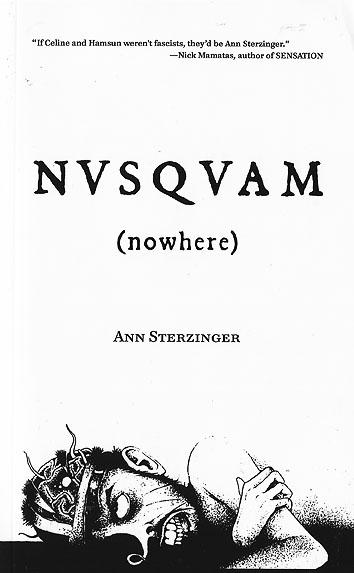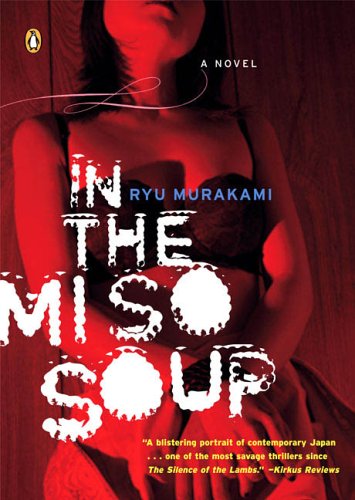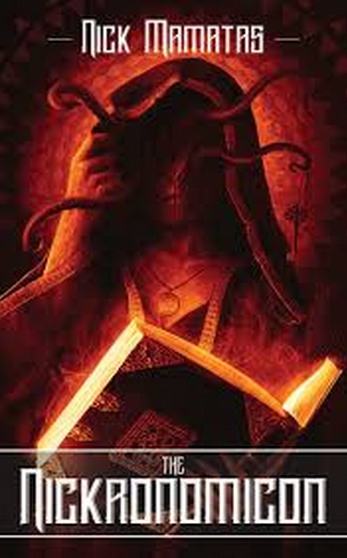 Some books keep you at arms’ length from their characters misery. Ann Sterzinger shoves your nose in it, like you’re a misbehaving dog and the book is your mistake. In one sense, it’s very funny. In another sense, it’s not funny at all. It doesn’t matter who you are. If you’re made of carbon, SOMETHING in this book will hit too close to home.
Some books keep you at arms’ length from their characters misery. Ann Sterzinger shoves your nose in it, like you’re a misbehaving dog and the book is your mistake. In one sense, it’s very funny. In another sense, it’s not funny at all. It doesn’t matter who you are. If you’re made of carbon, SOMETHING in this book will hit too close to home.
Lester Reichertsen was a punk rock musician until his band kicked him out, seemingly on the verge of their big break. Now he’s living a fairly typical death in the world of academia. His dissertation is proving as painful as root canal surgery. He works as a put upon TA at the local college. He almost hates his son. He’s not drifting away from his wife, but only because they were probably never close to begin with. He is alienated from everyone, including himself. In short, he is a human anchor, plumbing the depths of the middle class by colliding with the bottom head-first. He’s a Holden Caulfield grown old enough to see himself become one of the phoneys.
The book is a succession of partly comic, partly ghastly events that illustrate the emptiness of his life. Encounters with his father and his father-in-law, unreconstructed narcissists both. A run-in with his old band. A young woman who might be the Lolita to his Humbert Humbert. All of it serves to reaffirm that he’s not insane, he’s just stuck in an insane world. How does he function? Is there ANY way to function? As you approach the end of Nvsqvam, it’s with a growing sense of apprehension, as though the thinning sheaf of pages is a ticking bomb. There can’t possibly be an escape for Lester.
The book is intense and grim, but it’s funny, too. Sterzinger induces cringe-laughter so frequently that I think my neural pathways have been trained to never again do one without the other. Like A Confederacy of Dunces (a book this sometimes reminds me of) Nvsqvam‘s characters seem stylised and exaggerated without seeming fake. This is another one of those books where you’ll meet every jerk you’ve ever known in its pages, if you’re not careful.
It also has an interesting metafictional angle, similar to Will Self’s The Book of Dave (although Sterzinger doesn’t go as far with the concept). It’s written in a way that invokes an classical document, filled with footnotes to help explain 21st century culture to some far-future student. At first, these footnotes seemed distracting. But they’re hilarious, and soon one looks forward to them – it’s like the book just proffered you a hors d’ourve. And I liked the way the events of Lester’s life become intertwined with the classical text he’s writing his dissertation on.
As the book progresses, the early gathering of stormclouds builds to a cat-5 gale. Nvsqvam is an exhausting book, and reading in small passages is recommended and perhaps necessary.
But it’s honest, and that makes it all the more painful. The publisher printed the title of the book at the top of every page – in an eerie way, this almost seems to become part of the text. Occasionally, Lester has small reversals of fortune. Sometimes, there’s a ray of hope. But your false hope is crushed anew every time you turn the page by a reminder that no matter what’s happening, you’re still Nowhere.
 In the Miso Soup has been called many things, most of them not true. You’ll hear it called, over and over, “The Japanese [Something]”. The Japanese Silence of the Lambs. The Japanese American Psycho (hey, I can grok it). Et cetera. None hit really close to the truth, which is fitting, because the novel’s about looking the other way, and deliberately missing the point.
In the Miso Soup has been called many things, most of them not true. You’ll hear it called, over and over, “The Japanese [Something]”. The Japanese Silence of the Lambs. The Japanese American Psycho (hey, I can grok it). Et cetera. None hit really close to the truth, which is fitting, because the novel’s about looking the other way, and deliberately missing the point.
The story isn’t much. It’s barely even a story. Kenji is a sex tourism guide for thrill-seeking gaijin, and he ends up working for a genuinely odd duck called Frank, an American who claims to be missing a section of his brain, and who might just be the serial killer stalking Shinjuku. Kenji and the rest of the story’s characters (including his girlfriend Jun) struggle to be two dimensional, and mostly exist as sounding boards and emotional foils for Frank, who carries the bulk of the story.
Frank’s a kind of prism through which we see the various contradictory aspects of Japanese society. Prudish, conservative…but you’d never see groups of schoolgirls selling sex to middle aged men in the United States. The idea that Japan embodies “too much, yet too little” has been done before, but Murakami bulldozes it into your head. Frank’s behavior seems abhorrent, but it doesn’t seem implausible that he’d go to Japan to commit these acts, rather than another country. Frank and Japan seem to fit together, in a weird way.
In the Miso Soup plays pretty loose ball with conventions on how to structure a novel. The big climax hits exactly halfway through, and much of the rest of novel is spent in incessant talkiness. Western gore porn novels make a mess and then fade to black. This novel deigns to show the emotional clean-up process afterwards, as well. There’s long periods of didacticism: at a certain point comparisons to Sade seem apt, as Murakami virtually forgets he’s telling a story and just directly reads you the riot act on some philosophical ideas for a page or two.
But the ideas are all compelling and heartfelt ones. Like the more famous Murakami, sometimes you can’t discern what his exact point is, but you can tell there always is one.
Props are due to translator Ralph F. McCarthy, who avoids the tin-eared “upmarket Babelfish” tone Japanese to English novels can sometimes have, and makes the prose eerie, uneasy, and alive. In his hands, Murakami’s version Shinjuku becomes a neon-lit abattoir that disturbs, unsettles, and most of all, convinces. Sometimes Japanese novels hold English readers at arms length because of the translation. Here, it doesn’t, no matter how much you might wish it so.
It’s not especially similar to any Western novel I can recall reading. At certain points, it’s even hard to tell if you’re having a good time. But if you want a compelling journey through the grease-traps of Japanese society, Murakami’s work is very thick soup indeed.

If you’re part of the crowd that wants nothing more than to resurrect Lovecraft and strap a rocket jetpack to his back, then who better to read than Nick Mamatas, Lovecraft superfan par excellence? It’s hard to forget instances like this comprehensive defense of Lovecraft’s prose, and how HPL’s odd word choices like “cyclopean” are actually the ones that fit the scene. It serves as a reminder to never, ever, argue with a superfan about their topic of interest. They’ll make you look like chopped liver.
The Nickronomicon fuses old and new in a way that feels fresh, yet familiar. The familiarity comes from D.M. Mitchell’s impressive but now fairly obscure The Starry Wisdom, another collection that tried to put Lovecraft and postmodernism on the same page (literally), and which I suspect had somewhat of an influence on these stories. One of the Starry Wisdom writers gets a co-writing credit here, for example.
Nickronomicon has all the gore, tentacles, and trans-dimensional spit-swapping you’d expect, but these things share space with Mamatas’s take on the everyman, which are usually writers, downtrodden beatnik types, or fetishistic Lovecraft enthusiasts. At times things get pretty self-referential, with some stories taking potshots at the Lovecraft fandom itself.
“Brattleboro Days, Yuggoth Nights” is a brief but enticing story-through-a-peephole affair that consists of a series of vague and nearly unreadable communications, apparently between HPL and an amateur press enthusiast. Lots of people have tried to the “what if Lovecraft was really on to something?” approach, but I liked this one for its brevity and subtlety. “And Then, And Then, And Then” is even shorter, and revolves around a developmentally challenged person’s encounter with unknown. Again, it’s weird fiction, but there’s a filter in the way – a filter of modernity that doesn’t destroy the weirdness but colors it, makes it seem different somehow.
There’s a fair amount of humor and jokiness. I liked how Mamatas doesn’t treat Lovecraft’s material as fresh virgin snow, but acknowledges that our culture has been strip mining him for more than fifty years (Cthulhu plush toy dolls, and all the rest). The Lovecraft mythos is now shot through with a fair amount of ridiculousness, and he’s not afraid to poke fun at the excesses of fandom, especially in “Mainevermontnewhampshire”, where we see this encounter between a writer and a fan.
“Hi, it’s me,” said the kid, who was actually wearing a tuxedo. “Remember me, from the Lenore Awards banquet, when you won the lifetime achievement award? I wore what I was wearing then in case you came, so you’d remember me.” “You’re my biggest fan,” Sam said. “ … Jeremy?” That was a safe guess. Everyone under the age of thirty seemed to be named Jeremy these days.Jeremy beamed. “You do remember me! I’m so glad I was able to make it. I spent years submitting stories, but finally, one got published. Do you read Dark Somethings, Mister Bey?” It was a photocopied zine that Sam received in the mail every eighteen months or so. He found that the paper stock was good for rolling joints, so appreciated the free subscription.
Ultimately, Nickronomicon rests upon strong and original stories. It’s not the most creative take on Lovecraft, or the best written, but it could end up being one of the most enduring…perhaps because its written by a superfan.
 Some books keep you at arms’ length from their characters misery. Ann Sterzinger shoves your nose in it, like you’re a misbehaving dog and the book is your mistake. In one sense, it’s very funny. In another sense, it’s not funny at all. It doesn’t matter who you are. If you’re made of carbon, SOMETHING in this book will hit too close to home.
Some books keep you at arms’ length from their characters misery. Ann Sterzinger shoves your nose in it, like you’re a misbehaving dog and the book is your mistake. In one sense, it’s very funny. In another sense, it’s not funny at all. It doesn’t matter who you are. If you’re made of carbon, SOMETHING in this book will hit too close to home.

